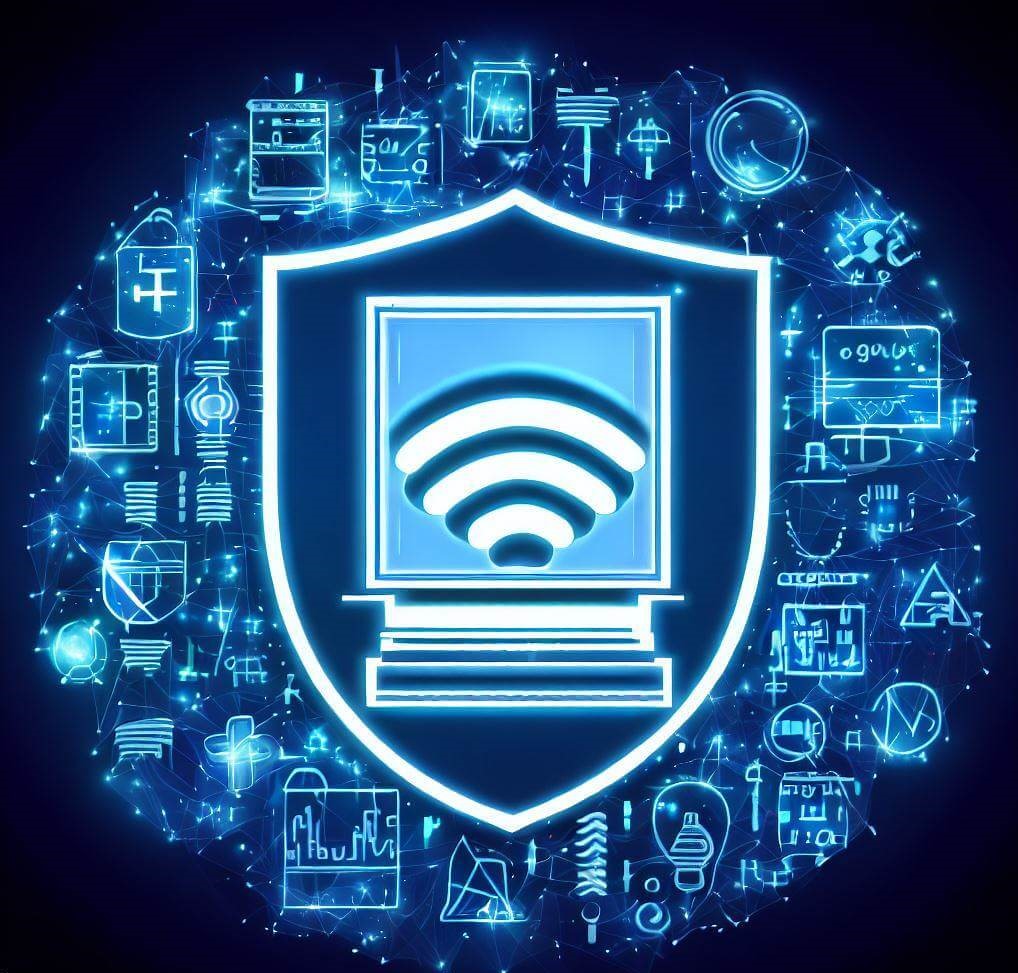In today’s world, our lives revolve around technology. Be it our smartphones, Wi-Fi, or microwave ovens, we are constantly surrounded by devices that emit Electromagnetic Fields (EMFs). While these technological advancements have made our lives convenient, they have also raised some serious health concerns. That’s why understanding EMF safety levels, and the numbers you need to know has become crucial.
Understanding EMFs
What is EMF?
EMF, short for Electromagnetic Field, refers to the invisible area of energy that surrounds electrical devices and wires. EMFs are part of the spectrum of electromagnetic radiation which extends from static electric and magnetic fields, low-frequency radio waves, microwaves, to infrared, ultraviolet, and X-rays.
Different Types of EMFs
EMFs can be broadly categorized into two types – ionizing and non-ionizing radiation. Ionizing radiation, which includes X-rays and ultraviolet rays, carries enough energy to ionize atoms or molecules and remove tightly bound electrons. On the other hand, non-ionizing radiation, such as those from our cell phones and Wi-Fi, does not carry enough energy to ionize but can still heat body tissue.
The Dangers of EMFs
How EMFs Affect Our Health
Though the conversation around EMF exposure is still ongoing, some research suggests that exposure to high levels of EMFs could lead to various health issues. The degree of impact can largely depend on the type of EMF, the intensity of the radiation, duration of exposure, and individual health factors. Some studies have linked long-term EMF exposure to an increased risk of diseases like cancer and neurological disorders. On a cellular level, EMFs are thought to cause oxidative stress and DNA damage, though more research is needed to fully understand these interactions.

Reported Symptoms of EMF Exposure
Symptoms of EMF exposure can vary from person to person, with some individuals showing heightened sensitivity. Often termed “Electromagnetic Hypersensitivity,” these individuals may experience symptoms like headaches, fatigue, stress, sleep disturbances, and skin symptoms like prickling, burning sensations, and rashes. It’s important to note that these symptoms are non-specific and could be related to other health issues as well.
EMF Safety Standards and Limits
Global Safety Standards for EMFs
Around the globe, various health and safety organizations have set guidelines for safe levels of EMF exposure. The World Health Organization (WHO) and the International Commission on Non-Ionizing Radiation Protection (ICNIRP) provide guidelines for limiting exposure to electric, magnetic, and electromagnetic fields. However, these guidelines vary greatly, and there is no universally accepted standard for what constitutes a ‘safe’ level of EMFs.
Understanding the Numbers: Measurement Units of EMF
When it comes to EMFs, the intensity of the field is typically measured in Gauss (G) for magnetic fields and Volts per meter (V/m) for electric fields. For radiofrequency radiation, like from cell phones and Wi-Fi, power density is often measured in microwatts per square centimeter (μW/cm²). Understanding these units and their safe limits according to various standards can help you assess your risk.
EMF Safety Levels in Everyday Devices
EMF Levels in Home Appliances
Did you know your home could be a significant source of EMF exposure? Household appliances like microwaves, televisions, and even your vacuum cleaner emit EMFs. For instance, a microwave can generate magnetic fields of up to 200 milligauss (mG) when running. According to the Environmental Protection Agency (EPA), prolonged exposure to levels above 2 mG may be harmful. This doesn’t necessarily mean that you should throw away your microwave, but awareness of its EMF emissions can help you use it more responsibly, such as stepping away while it’s running.
EMF Levels in Wireless Devices
Wireless devices like smartphones, Wi-Fi routers, and laptops emit radiofrequency radiation, a type of EMF. A study published in the journal Environmental Research found that using a mobile phone for more than 1,000 hours, or about 17 minutes a day over a ten-year period, increases the risk of developing tumors by 60%. When not in use, it’s advisable to keep your devices in airplane mode or switched off entirely to reduce exposure.
EMF Mitigation Strategies
Reducing Your EMF Exposure
Reducing your exposure to EMFs can be a practical way to protect your health. Here are a few suggestions:
- Distance: The strength of an EMF decreases rapidly with distance, so keep electronic devices away from your body whenever possible.
- Time: Limit the amount of time you spend near high-EMF devices.
- Shielding: Use EMF shields on your devices. They don’t eliminate EMFs but can significantly reduce your exposure.
EMF Safety in the Home
For a safer home environment, consider the following steps:
- EMF Meter: Invest in an EMF meter to check the levels of radiation in your home.
- Wiring: Check your home’s wiring. Faulty or outdated wiring can lead to higher EMF levels.
- Placement: Be mindful of where you place your Wi-Fi router and other high-EMF devices.

Living with EMF: Finding a Balance
While it may be impossible to eliminate EMF exposure entirely, we can take steps to manage our exposure. Remember, the goal isn’t to live in fear of EMFs but to be knowledgeable about them and make informed choices. Here are a few more suggestions:
- Hardwire Internet Connections: Instead of using Wi-Fi, use a hardwired Ethernet connection. It provides a stable, fast, and more importantly, lower EMF internet connection.
- Limit Mobile Phone Usage: Use hands-free devices or speakerphone mode while making calls. Limit the length of your calls and try to text more often than calling.
- EMF Blocking Products: Invest in EMF blocking products such as special paints, fabrics, and films. These can help to minimize EMF exposure in your home.
The Future of EMF Safety: Research and Innovations
As we move forward, it’s crucial to keep a vigilant eye on the developments in the field of EMF safety. Many scientists, researchers, and companies worldwide are actively studying the effects of EMF on our health and finding innovative ways to safeguard us from potential harm. Let’s delve deeper into some of these promising advances.
Cutting-Edge EMF Research
Research into the effects and safety levels of EMF exposure is continuous and ever-evolving. Various organizations, including the World Health Organization (WHO) and the International Agency for Research on Cancer (IARC), are conducting large-scale studies to better understand the long-term health impacts of EMFs.
Emerging research is not only focusing on the possible health risks but also investigating the therapeutic uses of EMFs. For instance, Pulsed Electromagnetic Field (PEMF) therapy is showing promise as a treatment for osteoarthritis, bone healing, and depression.
Technological Innovations in EMF Safety
While technological advancement has escalated EMF exposure, it’s also providing us with tools and technologies to mitigate their impact. There’s a burgeoning market of EMF protective devices, such as:
- EMF Shielding Devices: These devices, available as phone cases, laptop shields, or even wallpaper, are designed to block or reduce the EMF emissions from our gadgets. They use different mechanisms, such as Faraday cages or special materials, to absorb, reflect, or otherwise neutralize harmful EMFs.
- EMF Harmonizing Products: Some companies offer products that claim to ‘harmonize’ or ‘neutralize’ EMFs. These products, ranging from pendants to stickers for your devices, reportedly work by changing the quality of the EMFs rather than reducing their quantity.

Educational and Policy Initiatives
As our understanding of EMFs grows, so does the recognition of the need for public education and policy changes. Some governments are already adopting stricter safety standards and regulations on EMF exposure. Meanwhile, nonprofits and advocacy groups worldwide are undertaking initiatives to raise awareness about EMF exposure and promote safer technology use.
The Role of Individual Responsibility
Finally, it’s important to remember that while societal and technological solutions are vital, individual responsibility plays a key role in EMF safety. Empowering ourselves with knowledge about EMFs, staying updated with the latest research, and making informed decisions about our technology use can go a long way in ensuring our safety.
In conclusion, while EMF exposure is an unavoidable aspect of modern life, there are several ways we can mitigate its potential risks. By staying informed and proactive, we can safely coexist with technology without compromising our health. After all, as the adage goes, ‘Knowledge is power.’ And in this context, knowledge can also be the key to our well-being.
Conclusion: EMF Safety is in Your Hands
Navigating the world of EMFs can be daunting, but with the right knowledge and tools, you can make decisions that help safeguard your health and the health of your family. Remember, you’re not alone in this journey, and there are countless resources available to help you make sense of it all. Here’s to your health, in a world where technology and wellbeing coexist!
FAQs
Q1: What are the recommended safety levels for EMF exposure?
A: According to the International Commission on Non-Ionizing Radiation Protection (ICNIRP), the general public should not be exposed to EMF levels over 60 mG.
Q2: How can I measure EMF levels in my home?
A: You can use an EMF meter to measure the levels of radiation in your home. There are many models available online.
Q3: Can I completely eliminate EMF exposure?
A: Completely eliminating EMF exposure might be impossible in today’s digital age. However, by practicing certain safety measures, you can significantly reduce your exposure.
Q4: What are some ways to reduce EMF exposure?
A: Keeping a distance from electronic devices, reducing the time spent near high-EMF devices, using EMF shields, and investing in EMF blocking products can help reduce exposure.
Q5: Are there any health issues associated with EMF exposure?
A: Long-term exposure to high levels of EMFs has been linked to various health issues, including sleep disturbances, headaches, depression, fatigue, and increased risk of certain types of cancer. However, more research is needed in this field.

